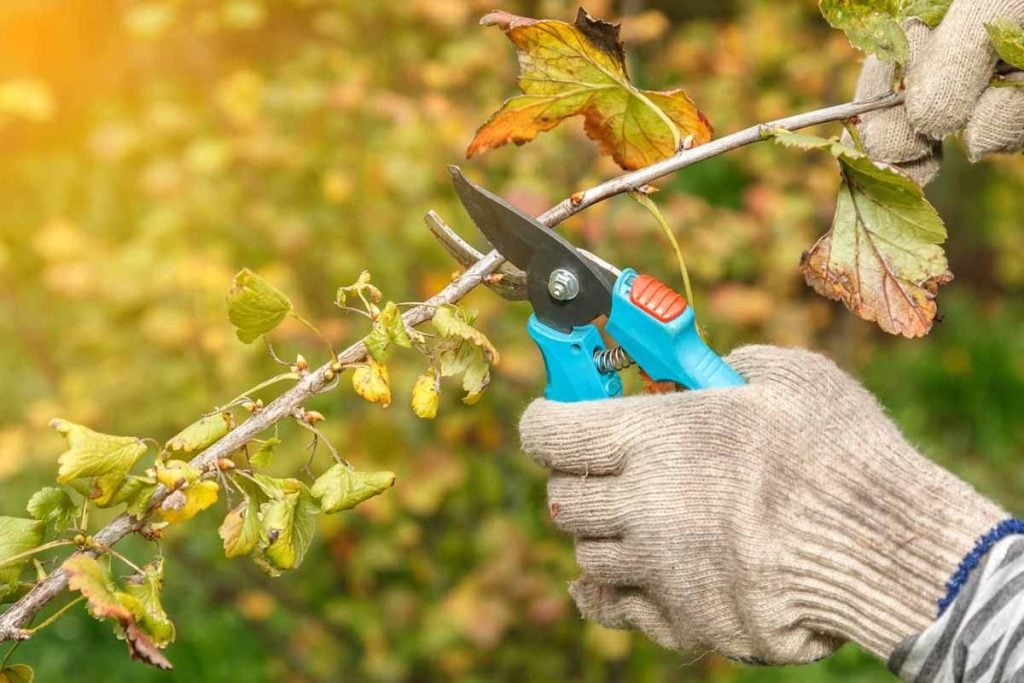Cooler days flip the garden’s switch from push to pause, and October is when smart cuts pay off. Pruning now guides recovery, protects structure, and sets roots to work while top growth rests. Because sap flow slows, clean cuts seal well and disease risks drop. Remove weak wood, clear tight tangles, and let light and air reach the center. Thoughtful timing gives your plants the quiet they need to rebound with force when spring warms the soil.
Why October timing powers healthier structure
October ushers many garden residents into dormancy, which slows sap and calms growth. Because metabolism eases, cuts stay clean and tissues seal better before deep cold arrives. Energy shifts underground, so roots strengthen while top growth rests. Handled now, plants conserve reserves instead of bleeding energy into storm-damaged shoots.
Selective trimming removes dead, damaged, or diseased wood before problems spread. Fungi and borers colonize weak tissue, then leap to healthy stems when left in place. Clearing gateways breaks the cycle, preserves vigor, and sets a clean framework for spring push, while saving time spent nursing setbacks.
Structure opens when crowded shoots are thinned. Light and airflow reach shaded interiors, which lowers humidity and weakens pathogens. That ventilation matters in long, damp winters, where trapped moisture fuels spots and rot. A brighter, airier outline also guides future growth and keeps seasonal maintenance simple and predictable.
Essential plants and vigorous climbers to tackle now
Climbing roses love an autumn tidy because they bloom on current season wood. Cut out old, unproductive canes, then tie vigorous new shoots in a fan against supports. This spreads light and boosts bud sites. Shaping now protects canes from winter breakage and sets a strong flower show.
Virginia creeper demands firm control in October. Unchecked, it creeps into eaves and damages structures. Established vines accept drastic reduction, even cut back to one meter above ground. The bold chop looks severe today, yet the resilient framework rebounds quickly with fresh shoots once spring warmth returns.
Summer bloomers such as buddleia, clematis, and honeysuckle appreciate a moderate trim. Shorten branches by about one-third to reduce wind snap and snow weight. That preventive cut lessens storm losses, particularly in harsher winter regions. This measured approach keeps plants safe now and ready for late-winter pruning finishes.
Techniques that protect cuts and prevent disease
Go light in October. Large wounds heal slowly in cold, so focus on small, clean cuts that shape without shock. Work with sharp tools to avoid crushing tissue and to lower infection risk. Step back often to assess balance, see structure, and keep the natural outline intact.
Begin with the obvious. Remove dead, diseased, and storm-scarred wood, then clear crossing stems that rub and open entry points for pathogens. Thin congested centers so light and air can move freely. Keeping that interior open helps plants resist fungal pressure and reduces routine winter maintenance headaches.
Where deer browse, protect roses right after pruning with barriers or repellents. Time and technique matter together, which preserves blooms and new shoots. Use companion-planting logic to group supportive neighbors and coordinate their trim windows. That way, water, nutrients, and pollinators serve the whole bed more efficiently.
Tree care, safety, and structural choices for plants
Not every shrub wants a hard cut now. Decorative foliage choices such as dogwood, pittosporum, and elaeagnus respond best to light cleaning. Remove only problem shoots and keep the natural silhouette as you go. That restraint preserves seasonal interest, safeguards buds, and ensures healthier frames when growth wakes.
Treat autumn tree work as targeted maintenance. Take out dead limbs and obvious hazards to protect people, roofs, and fences nearby. Leave major structural shifts for late winter dormancy, when healing is faster and buds stay protected. Safety comes first, followed by clarity of shape, then long-term resilience.
Large deciduous and fruiting trees reward patience. Use October to inspect, note priorities, and book heavier work for the fully dormant window. Address only immediate risks now so resources support roots and stored sugars. That staged approach helps plants thrive while you keep property secure and tidy.
Plan now to multiply spring rewards across the garden
Good pruning shines when matched with smart planning. Map spring projects now, from bed preparation to fertilizer timing. If you start tomatoes, review transplant spacing, staking, and first feed schedules so roots settle fast. Study pollinator support and soil health so the whole garden works as one system.
Layer in beneficial partnerships between neighbors that share water and light well. Pair vines and perennials that attract helpful insects, then time their trims together. When tasks align, nutrient use improves and problems drop across beds. That coordination also frees weekends you might spend troubleshooting scattered issues.
Specialized care pays off for stone fruit. Research peach tree nutrition now, then plan sprays or organic defenses for common pressures. Keep notes on what thrived and what struggled, and refine that map for spring. These records help plants surge once warming days bring buds and steady growth.
Your October cuts set up a strong spring comeback
Quick, careful October work pays off for months ahead. Trim for health, open structure, and manage risk so you protect today’s outline while fueling tomorrow’s push. Keep heavy reshaping for late winter dormancy, yet tackle safety issues and airflow now to prevent losses. Add records, plan staking and feeds, and coordinate neighbors. With those quiet-season moves, plants meet spring with vigor, more buds, cleaner growth, and far fewer setbacks. That calm preparation invites a brighter season.
